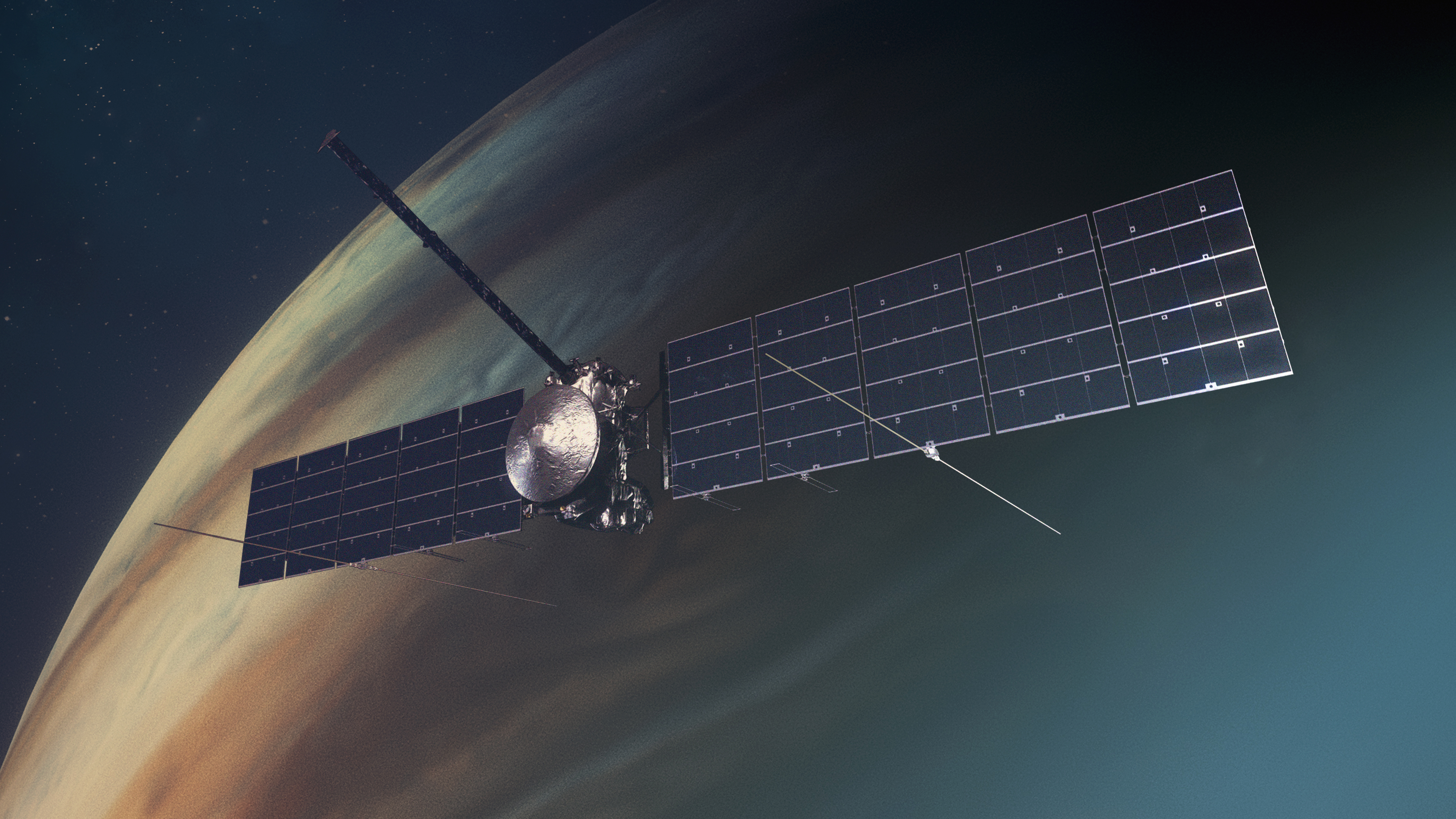
The nine science instruments on NASA’s Europa Clipper spacecraft are the most advanced and sensitive that have ever been sent the outer solar system:
- Europa Imaging System (EIS) is a wide-angle camera and a narrow-angle camera, each with an eight-megapixel sensor, that will produce high-resolution color and stereoscopic images of Europa. They will study geologic activity, measure surface elevations, and provide context for other instruments.
- Europa Thermal Emission Imaging System (E-THEMIS) is a thermal imager that uses infrared light to distinguish warmer regions on Europa where liquid water may be near the surface or might have erupted onto the surface. It will also measure surface texture to understand the small-scale properties of the surface.
- Europa Ultraviolet Spectrograph (Europa-UVS) will help determine the composition of Europa’s atmospheric gases and surface materials by collecting spectra and images with an ultraviolet telescope. It will also search near Europa for signs of plume activity.
- Mapping Imaging Spectrometer for Europa (MISE) is the mission’s infrared spectrometer that will map the composition and distribution of ices, salts, organics, and the warmest hotspots on Europa. The maps will help scientists understand the moon’s geologic history and determine if Europa’s suspected ocean is suitable for life.
- Europa Clipper Magnetometer (ECM) will study Europa’s magnetic field and aims to confirm that Europa’s ocean exists, measure its depth and salinity, and measure the moon’s ice-shell thickness. It will also study Europa’s ionized atmosphere and how it interacts with Jupiter and its magnetic field.
- Plasma Instrument for Magnetic Sounding (PIMS) will separate distortions due to charged particles from Europa’s induced magnetic field, which carries information about Europa’s ocean. Europa’s ionosphere and plasma trapped in Jupiter’s magnetic field distort magnetic fields near Europa.
- Radar for Europa Assessment and Sounding: Ocean to Near-surface (REASON) is an ice-penetrating radar that will probe Europa’s icy shell for reflections from the moon’s suspected ocean and study the ice’s structure and thickness. It will also study the moon’s surface topography, composition, and roughness.
- Mass Spectrometer for Planetary Exploration/Europa (MASPEX) will analyze gases — both in Europa’s faint atmosphere and in possible plumes. It will study the chemistry of the moon’s suspected subsurface ocean, how ocean and surface exchange material, and how radiation alters compounds on the moon’s surface.
- Surface Dust Analyzer (SUDA) will identify the chemistry of material emitted from Europa’s surface by tiny meteorite impacts. A subsurface ocean or reservoirs might also vent material into space as plumes and offer clues to Europa’s ocean salinity.
- Gravity/Radio Science equipment will measure how Europa’s shape and its gravity field change as the moon’s non-circular orbit carries it closer, then farther, from Jupiter. These measurements at various points in the moon’s orbit will show how Europa flexes and help reveal its internal structure.
Some of the instrument sensors are installed on the nadir deck, which enables simultaneous observations of Europa’s surface during flybys, while the two instruments designed to capture gas and dust face in the direction of spacecraft motion. Radar antennas are mounted directly onto the spacecraft’s solar arrays. The spacecraft’s magnetometer is on a boom that extends from the spacecraft, reducing obstructions and magnetic interference from the spacecraft. PIMS has four detectors, two placed on the upper part of the spacecraft and two on the lower part. The instruments’ electronics are installed in a vault to protect them from radiation.
